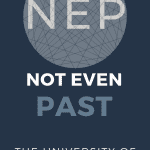
From the editors: Since its creation, Not Even Past has published hundreds of reviews covering various periods, places, and issues. In this series, we draw from our archives to suggest three great books focused broadly on a single topic.
This article presents three fascinating and essential studies related to Animal History.
Whereas most historical narratives focus exclusively on the human experience, animal history asks to uncover the shared history of people and other living creatures – wild animals, pets, livestock, and insects. Historians interested in these interactions stress not only how humans modified (among others) animals’ natural habitats, well-being, migration patterns, and even evolutionary trajectory but also how animals, in turn, shaped the history of individuals and societies. Often regarded as a sub-field within environmental history, animal history emphasizes that humans are not the only protagonists in the story of our planet.
The books we bring today narrate the shared history of people and non-human creatures from a different angle and bring forward a wide range of themes, ideas, and historical narratives. J.R. McNeil reveals how mosquitos – and the diseases they carried – shaped life in the Caribbean; Elizabeth Hennessy uses the legendary tortoises of Galapagos Island to wonder about the scale of historical time; and Edward Melillo explores the various ways in which insects of all sorts shaped our modern world. The reviews of Cindia Arango López, Timothy Vilgiate, and Atar David demonstrate animal history’s contribution to our understanding of how non-human creatures shaped our past, present, and future.
In addition to these great books, you should also listen (or listen again) to Francesca Consagra’s conversation with Joan Neuberger about the history of cats, dogs, and people recorded in 2014 for 15 Minutes History.
Cindia Arango López writes:
“Throughout Mosquito Empires, we find examples that show ecology shaped the history of the Americas because of environmental changes and human agency. Its title is suggestive of the relevance of mosquitoes in an imperial age. McNeill also touches on other subjects, including the transport of animals between continents and the ways in which existing fauna exercised agency to influence how people occupied territory. Furthermore, Mosquito Empires allows us to recognize the role of disease in human and environmental history. As such, it may be even more interesting today, in the wake of the COVID-19 pandemic. As McNeill points out, humans prefer to understand and explain history based on human affairs such as war, revolutions, or conquest. But sometimes, we forget our ecological agency in the environment as a part of our history. McNeill’s book shows co-evolutionary processes bridging the gap between society and nature, demonstrating that the agency of mosquitoes is as important as human agency.”
Read the full review here.
Timothy Vilgiate writes:
“In On the Backs of Tortoises, Elizabeth Hennessy frames the lumbering, armored reptilians of the Galápagos as “boundary objects”—material points of convergence between different spheres of action—that have been encoded with seemingly bottomless layers of meaning over time. First encountered by desperate sailors or pirates in the South Pacific as a live-saving source of food and water, turtles have been transformed by scientists, international mass media, and tourism into conservation icons and the recipients of legal protections. Simultaneously, local fishermen, often demonized by international media, despise the turtles as a metonym of the broader conversation project.”
Read the full review here.
Atar David writes:
“Melillo cleverly never argues that insects were the ones who “made the modern world.” Rather, he confronts his readers with a strong statement – that what we think of as fundamentally modern, and therefore inherently human-centric, is the result of millennia-long inspiration from, cooperation with, and fight against insects. Our music, art, clothes, food, and science were never always exclusively ours, for we owe nature and its tiny beings a huge debt. The book concludes with a critique of another key feature of modernity: rather than accepting the naïve belief that somehow people will find a way to leave nature behind, we should resume one of our longest human traditions – listening to insects.”
Read the full review here.

In this conversation from 2014, Joan Neuberger talks to Francesca Consagra, the former Senior Curator of Prints and Drawings and European Painting at the Blanton Museum of Art, about some of the inherent personalities and temperaments of cats and dogs, as well as those imposed or projected by humans onto them. Throughout history, these animals have been viewed and represented as family members, hunters of prey, and strays, and as figures and symbols in mythological, religious, political, and moral images.
Listen to the full episode here.
_________________________________________________________________________________________
The views and opinions expressed in this article or video are those of the individual author(s) or presenter(s) and do not necessarily reflect the policy or views of the editors at Not Even Past, the UT Department of History, the University of Texas at Austin, or the UT System Board of Regents. Not Even Past is an online public history magazine rather than a peer-reviewed academic journal. While we make efforts to ensure that factual information in articles was obtained from reliable sources, Not Even Past is not responsible for any errors or omissions.






